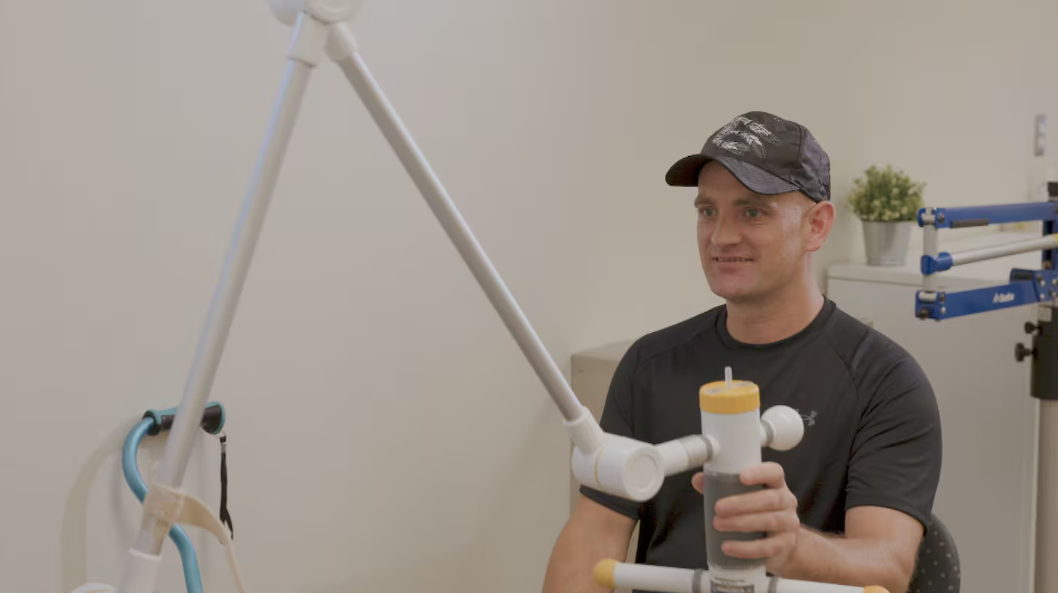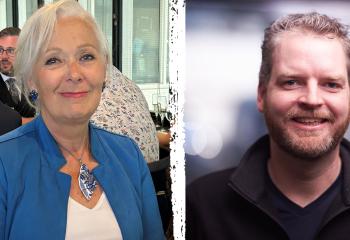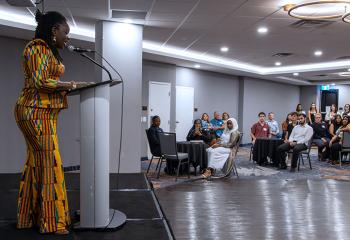
Pictured: Kris Johnston practices tasks to improve coordination and mobility using virtual reality technology in the QEII’s donor-funded Upper Extremity Performance Centre, following a stroke he suffered in winter 2025. (CTV Atlantic/ Suzette Belliveau)
When 42-year-old Kris Johnston from Halifax, Nova Scotia, suffered a hemorrhagic stroke in February 2025, his life changed in an instant.
“I suffered a stroke on a roof working in Bridgewater. I lost all mobility, basically, on my left side of my body,” he explains.
That day marked the start of his long and determined recovery, supported each step of the way by the incredible care teams and technology available at the QEII Health Sciences Centre.
After his stroke, Kris spent ten days at the QEII’s Halifax Infirmary before moving to the Nova Scotia Rehabilitation and Arthritis Centre, where he stayed until May 2025. There, QEII experts helped Kris relearn everyday skills and rebuild his independence.
“Basically, I called this place home for the entire time,” Kris says.
“I learned how to do a lot of things that we take for granted, you know, from putting my socks on to learning how to walk again.”
Today, Kris continues his recovery journey through the QEII’s Upper Extremity Performance Centre – a new space made possible through the generosity of QEII Foundation donors. Visiting three times each week, he works closely with his care team to continue strengthening his mobility and coordination.
QEII occupational therapist Lindsay Edwards says the centre is transforming how patients recover after a life-changing illness or injury. “Having a new modern space funded by the QEII Foundation and the donors has allowed us to see increased motivation by people who come into a new space,” she says.
“They feel like they’re working with the newest technology to allow them to continue to focus on their recoveries.”
One of these latest innovations is virtual reality therapy. This program allows patients to practice everyday tasks to build the coordination needed to return to daily life.
“They can engage in tasks like grooming their pet or making breakfast or grocery shopping,” Lindsay explains. “So, they practice the arm and hand movements to do those tasks through the simulation in the game.”

Pictured: Kris Johnston in the QEII’s Upper Extremity Performance Centre using virtual reality therapy technology. (CTV Atlantic/ Suzette Belliveau)
The QEII’s Upper Extremity Performance Centre was fully funded thanks to the generosity of 15 donors in the QEII’s Leadership Giving Group, and a matching gift from the J & W Murphy Foundation, for a total impact of $150,000.
The group’s generosity has also brought to life other key advancements in the centre. Wearable sensor technology now allows patients to continue therapy at home under the guidance of their therapist. New systems that track real-time data – such as range of motion and cognitive load – help therapists deliver more personalized treatment. And with remote monitoring technology, therapists can check in with patients in between appointments, assess progress, and adjust care plans as needed.
Created in 2024, the QEII’s Leadership Giving Group is a movement of individuals dedicated to advancing health care through the QEII Health Sciences Centre. The group fully funds one project each year, ensuring their generosity has a tangible impact on health care here at home in our community.
Thanks to the group’s funding, The QEII’s Upper Extremity Performance Centre now directly supports approximately 80 patients each week and will benefit many more in the years ahead.
As for Kris, his experience with the new centre has been great. He praises the excellent level of care he’s received throughout his entire recovery, provided by world-class experts at Atlantic Canada’s largest and most specialized adult hospital.
When he first started his recovery journey, Kris recalls that it took two to three people to transport him to physiotherapy. Today, he’s proud to be able to walk himself into his appointments at the QEII’s Upper Extremity Performance Centre.
“The QEII has been excellent. My experience, so far, has been amazing,” Kris says.
“People have been amazing, the space that has been created by the QEII Foundation has been amazing, and it’s definitely contributed to my wellbeing and getting better.”


